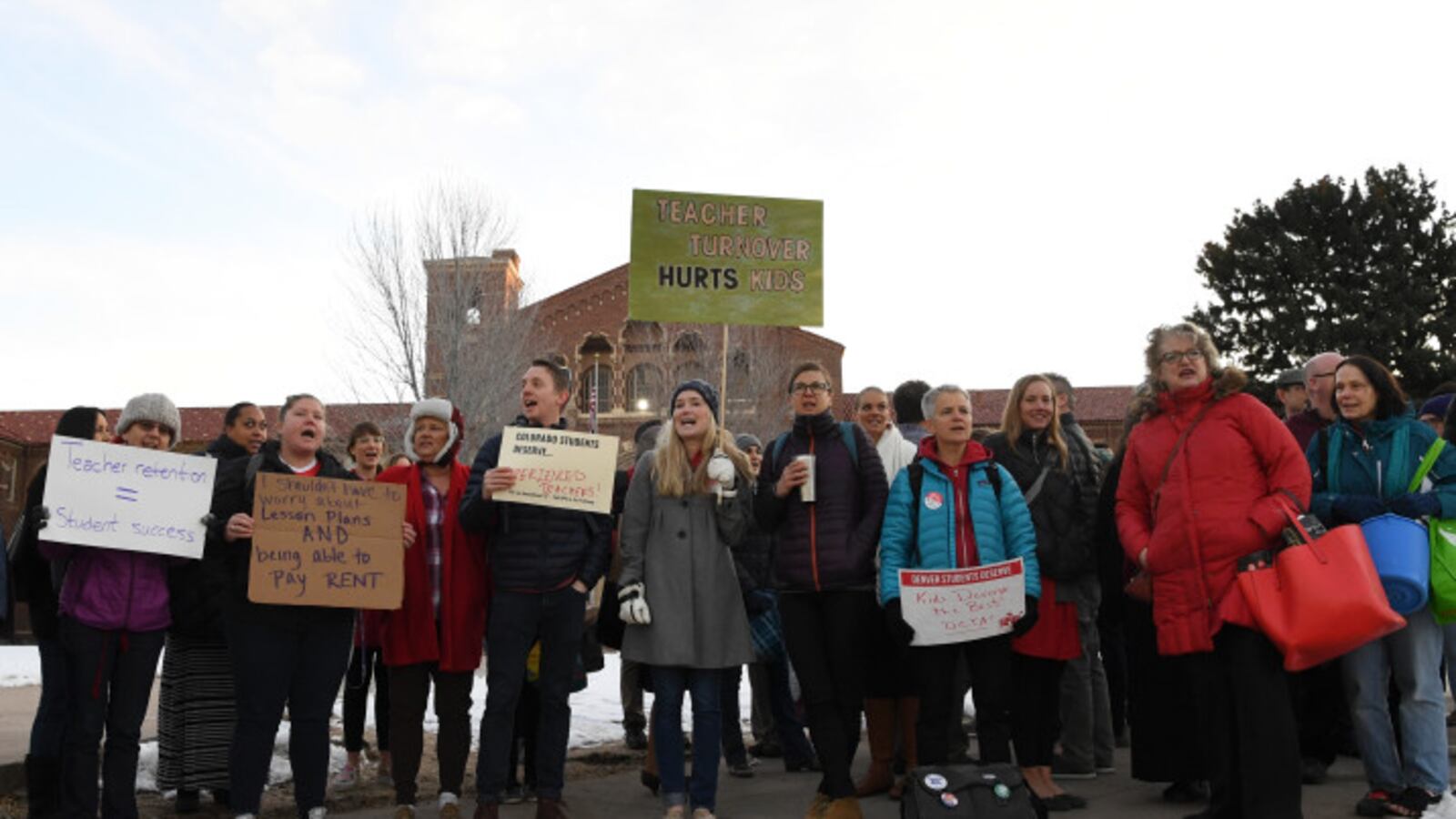If Denver teachers do indeed strike, the morning scenes outside schools could be dramatic: lines of educators chanting and waving picket signs, substitutes crossing those lines to get to work, and families and students trying to navigate it all.
Keeping a watchful eye will be Denver police and the school district’s safety team.
Both are trying to strike a balance: ensuring schools are able to operate while making sure picketing teachers are free to speak their minds. The stakes are high for all involved, but particularly for union organizers and the school district, as a blunder could undermine their standing in the court of public opinion at an inopportune time.
Last week, even before negotiations between the union and district hit a stalemate, Denver police initiated a conversation with Denver Classroom Teacher Association officials to lay out picket-line expectations, said Sonny Jackson, a police department spokesman.
Picketers are restricted to public sidewalks off school grounds, he said. Municipal code prohibits the obstruction of streets, sidewalks, and building entrances frequented by the public. Denver police — not district safety staff members, who are not sworn law-enforcement officers — enforce that rule.
Jackson characterized that conversation with the union and a subsequent one this week as positive.
“Our main objective was to build a rapport in advance of an impending strike,” he said.
The head of Denver Public Schools’ 140-member safety team — which includes uniformed safety officers at each middle and high school, an armed patrol team that provides support to all schools, an emergency management team, investigators, and support staff — is striking a similarly collaborative tone.
“Really, our primary focus is safety,” said Mike Eaton, DPS’s chief of safety. “We want to make sure our schools remain open … We also understand that teachers have a right to voice what they feel they need to voice, and that plays a part in our planning.”
The union has expressed a different point of view on one key point: It would like to see schools shut down, “as a demonstration of the essential labor performed by educators.”
A “strike plan” document produced ahead of bargaining sessions this month describes closing schools as a goal of picketing, suggesting it begin when teachers start arriving for the day and wrap by mid-morning. A union FAQ document suggests another tactic to force school closures: encouraging parents to keep sending their children to school during a strike. The thinking is that if enough students show up, the district won’t be able to adequately staff school buildings and will be forced to close them for safety concerns.
Not all teachers have embraced that strategy, with some saying that the decision about whether to send a student to school should be a personal choice.
The DCTA has designated 12 “anchor schools” for larger pickets, the strike plan says. “These are also schools with high visibility, along major thoroughfares,” it states.
Those schools were identified as:
- Southwest: Abraham Lincoln High School, Kaiser Elementary, Eagleton Elementary
- Far Northeast: Denver School of the Arts, Montbello High School, Vista Academy
- Southeast: Cory Elementary/Merrill Middle School, Hill Middle/Steck Elementary, Hamilton Middle/Holm Elementary
- Northwest: North High School, Polaris Elementary, Colfax Elementary
At four of those campuses — Lincoln High, North High, Montbello High, and Vista Academy — district-run schools and charter schools share space. DPS officials aim to keep all their campuses open with non-union staff and administrators, substitutes, and central administration staff pitching in, and have assured co-located charter schools that operations will be normal.
Eaton, the district’s safety chief, said good communication up front between his team, the union, and police is essential to managing what is likely to be an emotionally fraught situation. If a strike begins, the district intends to open an emergency operations center to manage its resources, he said.
Corey Kern, deputy executive director of the Denver Classroom Teachers Association, said the union has had several conversations with Denver police that have been generally positive. He added that the union is still working on its strike plans and is not ready to share details about how teachers will approach picketing.
Eaton said that because teachers “always put students first,” district safety officials do not anticipate picketers “targeting kids or creating an unsafe environment for kids.” That doesn’t mean the scenes unfolding outside schools will leave students unaffected, he said.
“It can be very traumatic for elementary school kids to see a teacher he or she has trust in, to see the teacher picketing outside their schools,” Eaton said, adding that the district will look for ways to minimize impact on children.


